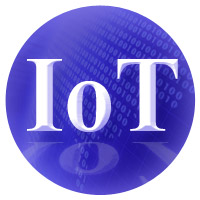
The city of San Jose, California, recently decided to undertake an Internet of Things pilot project.
Under a deal finalized last month, anyCOMM, will deploy WiFi sensors on 148 streetlights in the city center, connecting through the lights’ photocell receptacle.
Another 18 will be placed around the perimeter of Mineta San Jose International Airport — which has been breached five times within one year — pending approval by the United States Federal Aviation Administration.
The sensors will collect data on traffic, sense movement on the streets, turn off streetlights when sidewalks and roads are empty, detect ground shifts and send earthquake warnings, and act as WiFi hotspots.
“Part of the pilot is testing the unit’s functionality, so usage will vary,” said San Jose spokesperson David Vossbrink.
The sensors can record audio and video, but “only activities in the publicly owned right-of-way are being undertaken,” he told TechNewsWorld. “No personal information is being gathered.”
When the pilot ends, anyCOMM will present a report to San Jose on how the data and functions from the sensors can be used to complement the city’s services.
Will WiFi Work?
The sensors will be vulnerable both to bad weather and radio frequency interference.
“WiFi is a local area networking protocol,” noted Rob Enderle, principal at the Enderle Group. “It typically isn’t a good long-distance protocol.”
On the other hand, WiFi should be an important connectivity medium for smart cities, “particularly for latency-insensitive applications,” suggested Dan Shey, a practice director at ABI Research. [*Correction – June 17, 2015]
Cities have “lots of landline connections. Telcos and cable companies offer WiFi and would welcome more connections, and WiFi is a technology that is easily connectable to smartphones and tablets,” he told TechNewsWorld.
Keeping Data Secure
Security might be an issue, because “you’ll get lots of interference from WiFi hotspots,” Enderle told TechNewsWorld. “At the very least, this technology should be MU-MIMO, but it doesn’t appear to be.”
Smart cities technology “creates billions of devices connected, leaving massive vulnerabilities,” warned Secure Channels CEO Richard Blech.
Why anyCOMM?
Several major vendors, including IBM, Qualcomm and Cisco, are offering smart city technology, which appears to be what San Jose wants.
That raises the question of why the city opted to work with anyCOMM, which is a startup.
“This pilot is about testing a precommercial technology,” San Jose’s Vossbrink explained. “The city’s demonstration policy creates the opportunity to companies with precommercial technology to demonstrate their technologies on a nonexclusive, limited-scope basis.”
Translation: San Jose gets to play with the technology for free, acting as an alpha or beta tester, and the company gets free field testing of its products. It’s a win-win.
“Any expansion would require a procurement process,” Vossbrink said.
Perhaps San Jose’s selection is a wise one.
“The headlines on smart cities are driven by the marketing of very large companies, which see cities as the entities that will write billion-dollar checks for smart client technologies,” ABI’s Shey remarked.
What is anyCOMM?
There’s little information available about anyCOMM. The company appears to be funded by Velocity Capital, which lists anyCOMM’s headquarters as being in Folsom, California.
San Jose’s Vossbrink referred questions about anyCOMM to the company’s vice president, Keith Scott, but Scott did not respond to our request for comment.
The anyComm website could not be accessed when this article was published.
The technology anyCOMM is offering doesn’t appear to be groundbreaking, but “the ability to consolidate many functions of potential use to improving city operations in a small, easy-to-install unit is unique to this product, to our knowledge,” Vossbrink observed.
“If there are others operating in this space,” he said, “we would be happy to look at piloting their technology as well.”
*ECT News Network editor’s note – June 17, 2015: In our original published version of this story, we quoted Dan Shey as referencing “latency-sensitive applications.” Shey informed us that he meant to say “latency-insensitive,” because “WiFi uses unlicensed spectrum and is a contention-based technology so data transmissions can have delays and other connection reliability issues. Applications where the sensor input does not require an immediate output or response, or applications that collect data but do not need to immediately transmit captured data, are better suited for WiFi, given its performance characteristics.”





















































